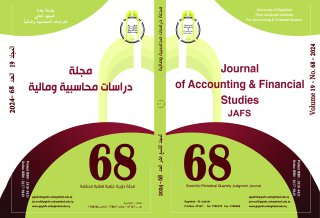Risk-based internal audit and its role in adding value to the company
DOI:
https://doi.org/10.34093/smv7gk74Keywords:
Risk-Based Internal Audit, Adding Value, International Standards for Professional PracticeAbstract
Risk-based internal audit contributes to adding value to the company, but most corporate departments in the local environment neglected the role of the internal audit function, and thus the work of this function was limited to meeting the requirements of administrative work without contributing to adding value. Hence the problem of the research came from the non-compliance of most internal audit bodies with the standards. Professionalism and the guidelines that govern their work to enable them to fulfill the responsibilities entrusted to them and thus their inability to add value and its reflection on the value of the company. The research aims to shed light on the risk-based internal audit methodology as it is one of the methodologies that takes into account the objectives of each activity and thus the matter ends. The risks and controls that are most important to stakeholders and the company in general, to determine the work centers according to the degree of their exposure to risks to control them and reduce them to the level that management accepts. This in turn allows the internal auditor to allocate scarce audit resources to the areas that will add value to the company in accordance with international standards of professional practice. To achieve the goal of the research, it was adopted. The researcher used the descriptive analytical method by choosing the General Company for Land Transport as a sample for the community of public transport companies. The research reached several conclusions, the most important of which is that the mechanism of risk-based internal auditing used on the research sample helped in identifying the company’s risks for each department and proposing ways to address them to design an audit plan according to the departments. The most risky and useful of limited audit resources.
Downloads
Published
Issue
Section
License
The copyright is transferred to the journal when the researcher is notified of the acceptance of his research submitted for publication in the journal.



